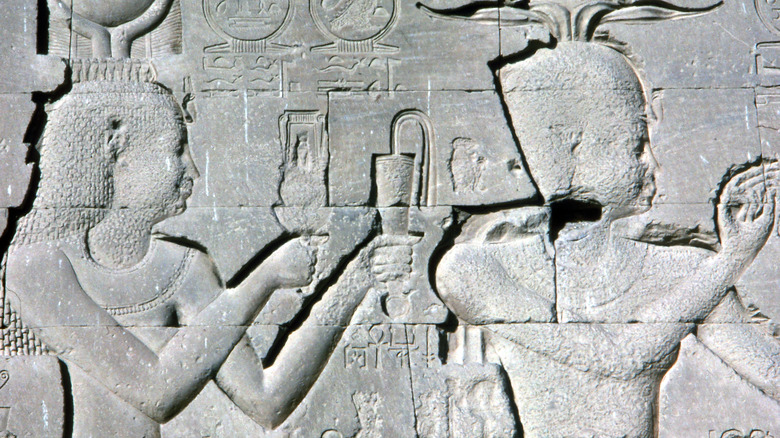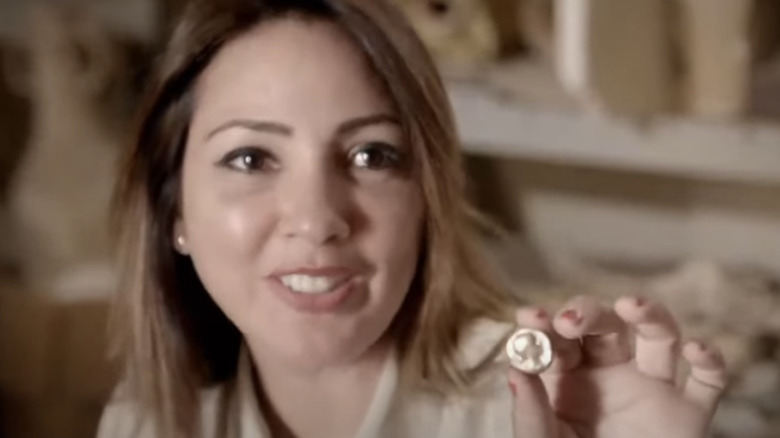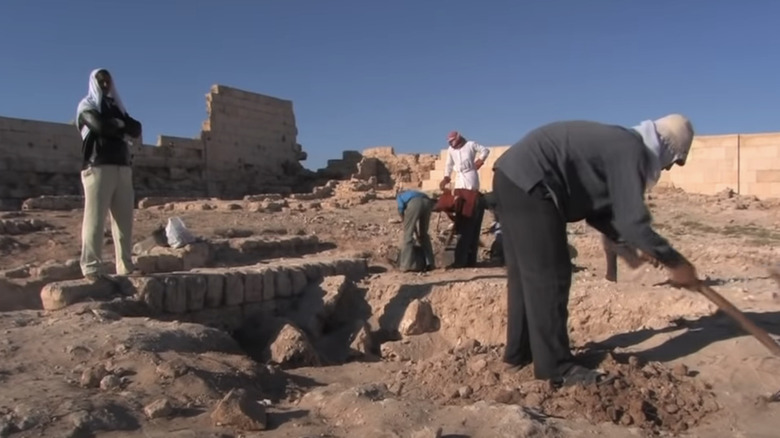The Tomb Of Cleopatra May Lie At The End Of A Newly Discovered 4,300 Foot Underground Tunnel
The exact location of the tomb of Cleopatra VII, who ruled Egypt from around 51 to 30 B.C., is one of the ancient world's most enduring mysteries, according to Britannica. After years of exploration, CNN reported on November 10, 2022, that it may now be found, according to University of Santo Domingo archaeologist Kathleen Martinez. As Smithsonian Magazine explains, the discovery was made at Taposiris Magna, a temple dedicated to Osiris, the Ancient Egyptian god of death, resurrection, and fertility (per The British Museum). Martinez long speculated that Cleopatra's final resting place may reside in the area because while Cleopatra was alive, she was considered the human incarnation of the goddess Isis, Osiris' wife.
Further supporting Martinez's theory, Cleopatra's husband — the Roman General Mark Antony, who also died near the end of Cleopatra's reign (via Britannica) — was considered the human embodiment of Osiris. After studying numerous other structures, Martinez said (via CNN), "[N]o other place, structure or temple combines so many conditions as the temple of Taposiris Magna."
A more than 4,000 foot tunnel was found
After Martinez (pictured) and her team's years-long excavation at Taposiris Magna, a more than 4,000-foot long, roughly six-foot tall tunnel was found more than 40 feet underground, as Artnet goes on to explain. Along the way, numerous other clues emerged suggesting that Martinez and her team were on the right track. Greco-Roman style mummies were found as well as a possible bust of Cleopatra and ancient coins with the queen's image.
Statues from Cleopatra's Ptolemaic era were also uncovered with other ceramic remnants, possibly from the same period. Speaking with Heritage Key, Martinez called Taposiris Magna the perfect place for someone like Cleopatra to be buried. "If there's a one percent chance that the last queen of Egypt could be buried there, it is my duty to search for her." If Cleopatra's tomb is discovered, "it will be the most important discovery of the 21st century," Martinez added. "If we do not discover the tomb ... [W]e made major discoveries here," both inside and outside the temple, she said.
The tunnel leads underwater
As CNN goes on to note, hampering Martinez is the fact that a large part of the discovered tunnel leads into the waters of the Mediterranean, possibly caused by a number of known natural disasters like earthquakes that occurred in the intervening centuries. Those events could have caused entire sections of the temple to possibly collapse. The next step for Martinez and her team is a further underwater excavation in the tunnel so far described as a "geometric miracle" (via Smithsonian).
At this point, it's unclear where the tunnel may lead. As CNN also notes, Cleopatra and her husband, Mark Antony, died by suicide around 30 B.C. It's believed they were buried together. Of Cleopatra's importance in history, Martinez said (via CNN), "She was an educated woman, probably the first one who studied formally at the Museum in Alexandria, the center of culture in her time." Martinez's 2022 announcement comes at the same time as the 100th anniversary of the discovery of King Tut's tomb, which is considered among the most notable accomplishments in Ancient Egyptian archaeology, according to NPR.
If you or anyone you know is having suicidal thoughts, please call the National Suicide Prevention Lifeline by dialing 988 or by calling 1-800-273-TALK (8255).


